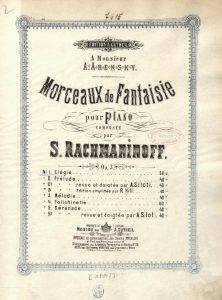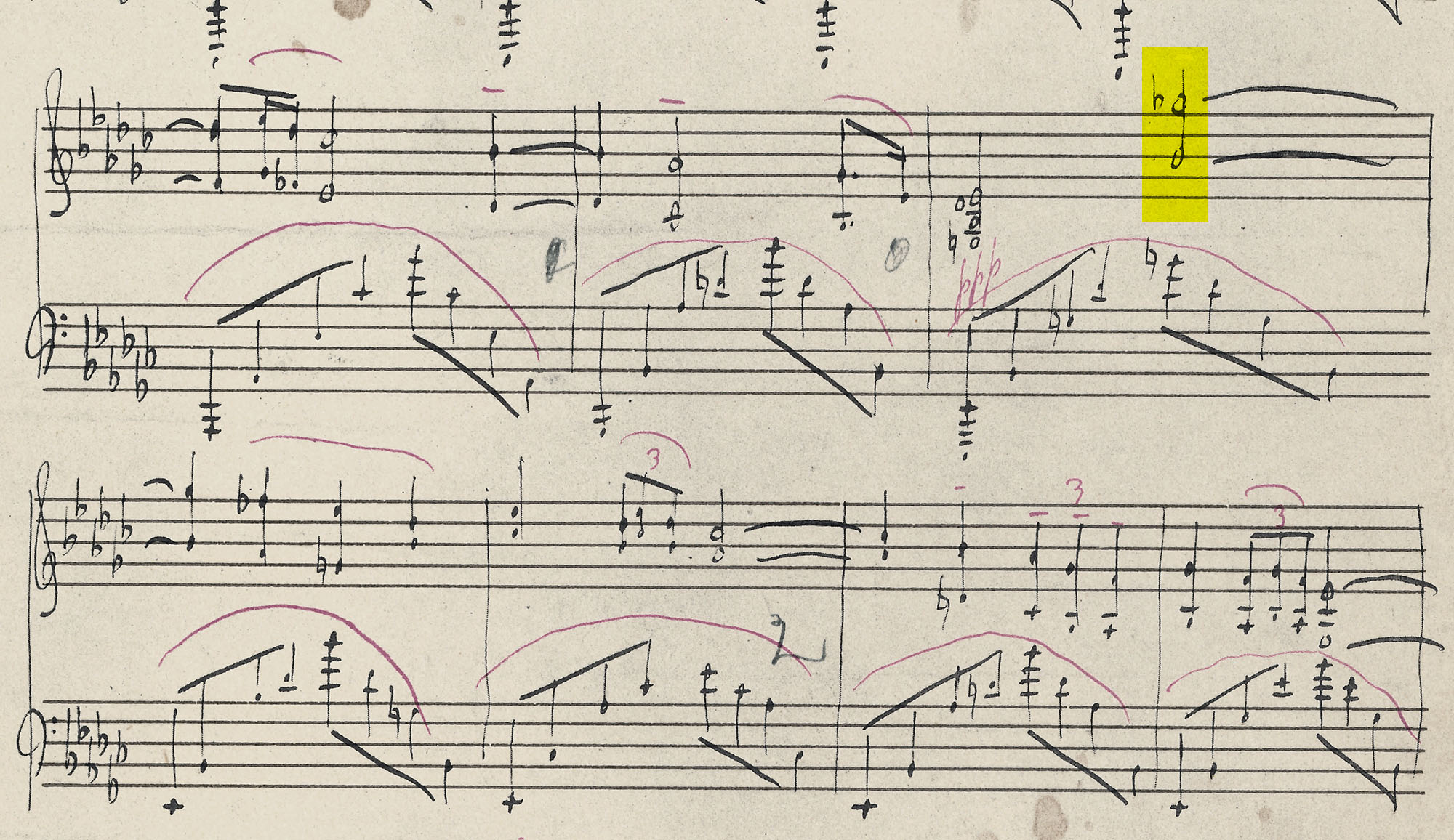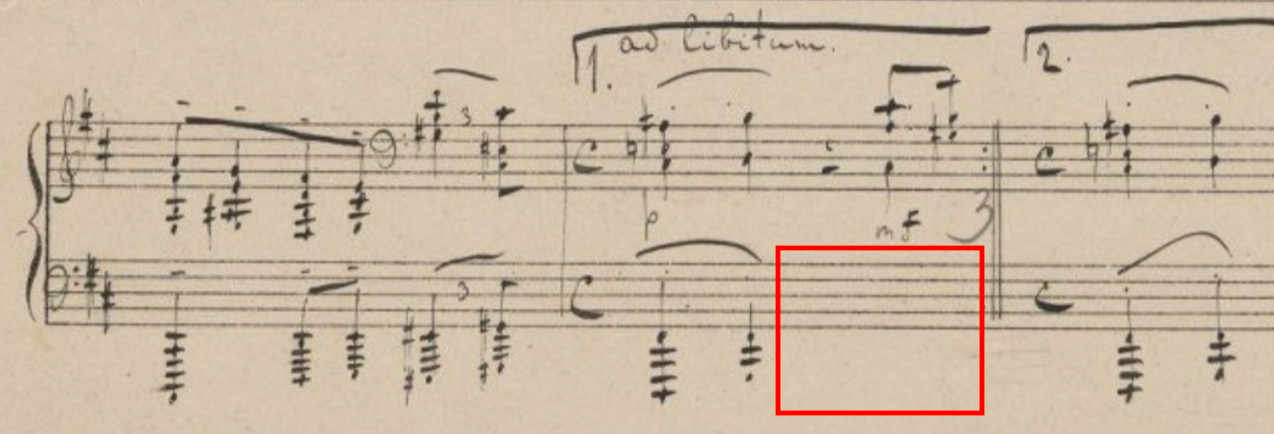 Perhaps – despite the anniversary year – I’m rather overdoing it with my blog posts on the Rachmaninoff topic😊 However, the sales figures and almost daily email requests for further editions show us how enormously great the interest in Rachmaninoff’s music is, worldwide. Our catalogue is at least well stocked: published recently were the two piano cycles Morceaux de fantaisie op. 3 (HN 1491) and Six Moments musicaux op. 16 (HN 1492). And although Rachmaninoff very thoroughly proofread his first editions, to be found again whilst preparing these editions were some interesting details and errors still remaining to date in reprints.
Perhaps – despite the anniversary year – I’m rather overdoing it with my blog posts on the Rachmaninoff topic😊 However, the sales figures and almost daily email requests for further editions show us how enormously great the interest in Rachmaninoff’s music is, worldwide. Our catalogue is at least well stocked: published recently were the two piano cycles Morceaux de fantaisie op. 3 (HN 1491) and Six Moments musicaux op. 16 (HN 1492). And although Rachmaninoff very thoroughly proofread his first editions, to be found again whilst preparing these editions were some interesting details and errors still remaining to date in reprints.
On a problem with accidentals in the most famous single piece of the five Morceaux de fantaisie op. 3, that is, the c-sharp minor Prélude, I’ve long since reported (see this blog post). Here the first edition, published by the Moscow publishing house A. Gutheil, differs from the autograph; then again, later, the new Breitkopf & Härtel edition (supervised by Rachmaninoff) follows the autograph version, undoubtedly also the correct one.
I encountered a very similar case in the first piece of the Morceaux de fantaisie, the nocturne-like Élégie. Here, too, the first-edition engraver had probably intervened without authority by placing a natural sign at the top right-hand note on beat 3 in measure 90:

Élégie op. 3 no. 1, first edition, Gutheil, 1893
And who could blame him, when concurrently heard is a g natural in the left hand – isn’t an E-flat major seventh chord absolutely meant in this measure…? And yet Rachmaninoff intended something else: in the autograph he clearly wrote a flat sign before this note in the upper voice, which is not supposed to be harmonic, but to retain the g flat of the main theme as a melody note, following the g flat-f flat-e flat-d flat line:

Élégie op. 3 no. 1, autograph, 1892 (Russian National Museum of Music, Moscow)
When Breitkopf & Härtel later re-edited the Élégie, restoring the g flat2 that he originally wanted can only have come from Rachmaninoff himself:

Élégie op. 3 no. 1, Breitkopf & Härtel edition, published after 1901
Rachmaninoff’s own 1928 recording on an Ampico player piano, heard here, documents how terrific this dissonance can sound and eliminates any lingering doubt about the accuracy of the g flat2:
In the case of the Six Moments musicaux op. 16, the source situation is not quite so convenient. As one of a very few Rachmaninoff works not appearing from A. Gutheil, his usual Moscow publisher, this piano cycle was published by his competitor P. Jurgenson. In Germany, the latter (in order to preserve international copyright) did not collaborate with Breitkopf as a partner publisher, but with Robert Forberg, who reprinted the edition, unchanged, from Jurgenson’s original plates. Thus, there was no new Breitkopf edition (newly revised by Rachmaninoff) as in the above, op. 3 case, to give us further information on questionable readings.
Opus 16 is also only sparingly represented in Rachmaninoff’s own recordings, with only one piece, Moment musical no. 2 in e-flat minor, included in his concert repertoire, recorded on a disc (in the 1940 revised version).
So, in the absence of comparative sources, it’s hard to decide whether he really wanted rests in m. 45 at the bracketed repeat in the Moment musical no. 3, as printed in the first edition:

Moment musical op. 16 no. 3, first edition, Jurgenson, 1896/97
Interestingly, no rests are given here in the autograph – just nothing at all:

Moment musical op. 16 no. 3, autograph, 1896 (Russian National Museum of Music, Moscow)
The question is justified as to whether Rachmaninoff merely forgot to enter the same upbeat notes in the left hand that he notated the first time in m. 13:

Moment musical op. 16 no. 3, autograph, 1896 (Russian National Museum of Music, Moscow)
Lacking clear evidence, I decided here not to alter the music text of the primary source (i.e., first edition), but to footnote this possible error. Interpreters may decide for themselves whether the missing left-hand rests are an oversight or perhaps a deliberate variation in the repeat.
What’s next for us with Rachmaninoff? Two more new editions are just now going to press, both of them for piano and orchestra: the Rhapsody on a theme of Paganini, so much in demand, and the no less popular Third Piano Concerto in d minor. And surely these editions will also yield enough material for further blog posts…
